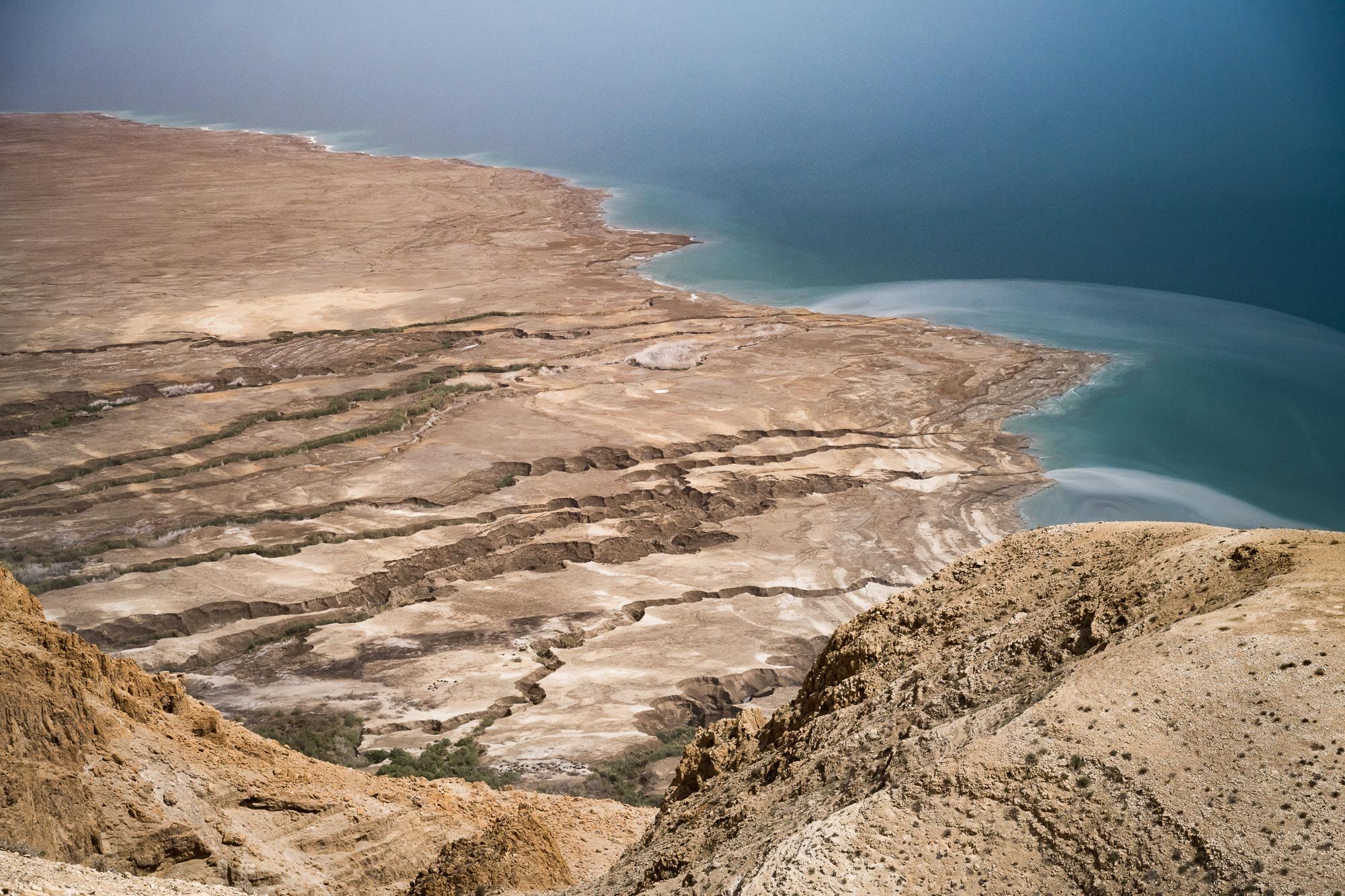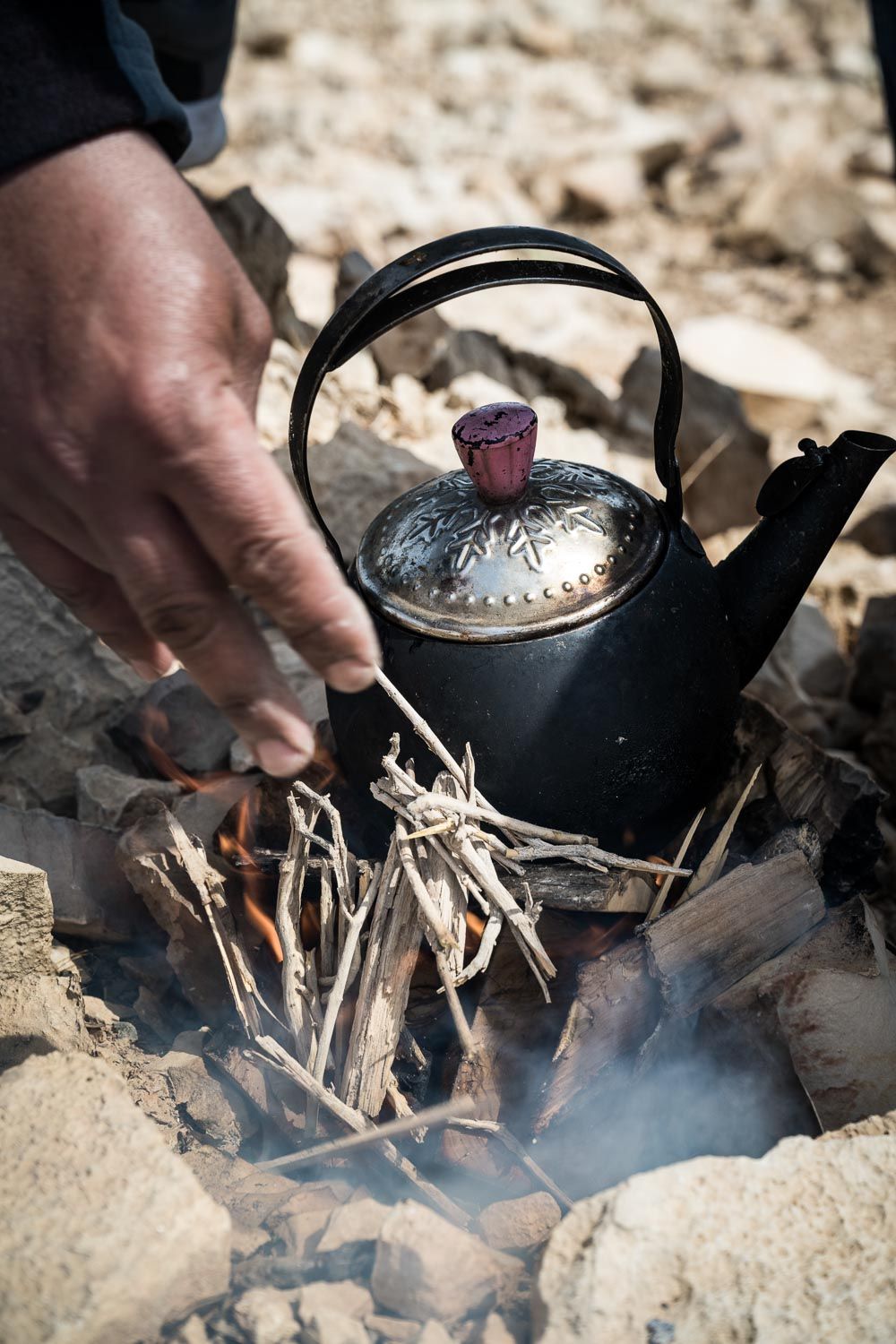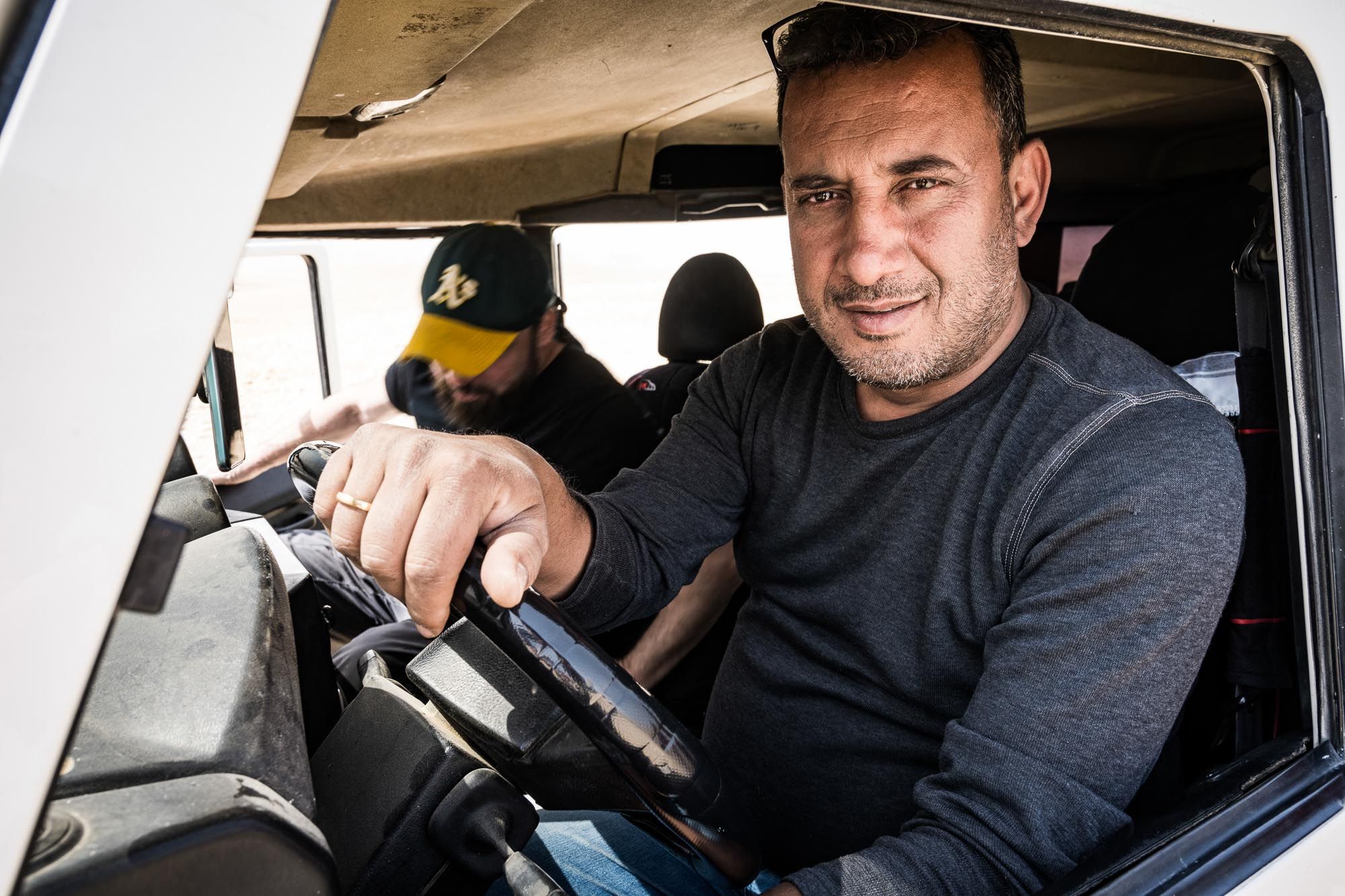The Bedouins of El-Bariyah Al Quds
Jerusalem Wilderness
Startling goat eyes look straight at me. I can understand why people used to think these beasts had the devil in them: the curved horns, those weird horizontal pupils. But yes, thanks to that lying black dash in their eyes, goats see in a panorama. And that comes in handy when quite a few beasts (and people) want to eat you. This particular goat stands completely in the sun, slanting on an ochre-colored rock, sort of like a horned gatekeeper of the Bedouin village I’m heading to. Skittishly it scurries away.
“As-salamu alaykum”
Precisely at that moment, a man of about sixty walks out of the small valley. “As-salamu alaykum,” he says softly as he stands beside the window of our guide Ahmad’s Landrover. Translated, that means peace on you, the polite Arabic greeting. “Wa-Alaikum-Salaam,” I say back. Peace on you too.
He introduces himself as Abu Mohammed Kirshen. Abu Mohammed means Father of Mohammed. Indeed, Bedouin men are given the name of their eldest son as soon as they become fathers, and Abu Mohammed’s eldest son is called… Mohammed. The man has kind brown eyes in an almost leathery face: the legacy of a life in the blistering sun of the El-Bariyah Al Quds, the Wilderness of Jerusalem.

DEAD SEA
Located in Palestine’s West Bank, El-Bariyah has a semi-desert climate and stretches from the hills of Jerusalem, Bethlehem, and Hebron to the west and the Dead Sea to the east.
And it is breathtakingly rugged and beautiful. The ochre colors of the land contrast spectacularly with the cloudless, intensely blue sky. Hills, canyons, and valleys take you from a height of 1,000 meters in Jerusalem to the Dead Sea, which at 421 meters below sea level, is the lowest place on earth.
The Jerusalem Wilderness falls dramatically into the salty Dead Sea at its eastern edge. From the steep cliffs that rise to five hundred meters, you have a dazzling view of the azure waters of the Dead Sea and Jordan
The Jerusalem Wilderness falls dramatically into the salty Dead Sea at its eastern edge. From the steep cliffs that rise to five hundred meters, you have a dazzling view of the azure waters of the Dead Sea and Jordan. “That cliff line was created as a result of the Great Rift, the movement of the tectonic plates that also created the Dead Sea valley,” knows guide Ahmad.

JAHALEEN
The Jerusalem Wilderness is also part of a protected area inhabited by Bedouins of the Al Kabna’a, Hathaleen, Al Rashida, and Jahaleen tribes.
Abu Mohammed belongs to the latter, the Jahaleen. He walks ahead of our Landrover towards his village. The sun reflects on his white keffiyeh, the traditional headgear of Bedouins in the Levant that protects against the sun, dust, and sand. A black agal, as the band is called, holds the white cloth in place. That agal used to serve to herd dromedaries and goats.
The Jahaleen were first described in 1875 by the British Claude R. Conder. He met one of their sheikhs, Abu Dahuk, and noted the size and strength of their horses and their fondness for tobacco. The Jahaleen tribe numbered a hundred and fifty men with a hundred tents. He also praised their enormous courtesy and hospitality.
Coffee is not just ‘having a cup of coffee’ among Bedouins; it is an essential ritual in Bedouin traditions
COFFEE AND CARDAMOM
That hospitality is still there. Abu Mohammed leads us to one of the village’s buildings. A sort of converted container serves as a guesthouse. There is no furniture, as Bedouins sit on the ground. We are offered coffee. The smell of coffee and cardamon fills the air. Coffee is not just ‘having a cup of coffee’ among Bedouins; it is an essential ritual in Bedouin traditions. Entire wars have been fought over a cup of coffee, marriages decided, and relationships settled.
El-Bariyah, in addition to its Bedouin culture, is rich in cultural heritage. “Archaeological research has shown that different parts of the area have been continuously inhabited from the Palaeolithic to modern times,” Ahmad says. “Traces of habitation from early prehistoric times (100,000-10,000 BC) are still visible on the northern side of Wadi Khareitun. There you will find three caves, Iraq al-Ahmar, Umm Qal’a, and Umm Qatafa. Once upon a time, these caves provided living quarters for our prehistoric ancestors. However, the view was completely different then. Back then, it was a forested landscape overlooking a river. Umm Qatafa is completely special. Traces have been found that provide the earliest evidence of the domestic use of fire in Palestine.”

El-Bariyah has traditionally been the place for people to escape civilization. This was the desert where Jesus wandered for 40 days and 40 nights. After the rise of Christianity, hermits started inhabiting the caves of El-Bariyah and built a series of monasteries. Some of these monasteries still exist today. Incidentally, these monasteries are often located in places that can best be described as oases. Now, the monks were not that crazy.











